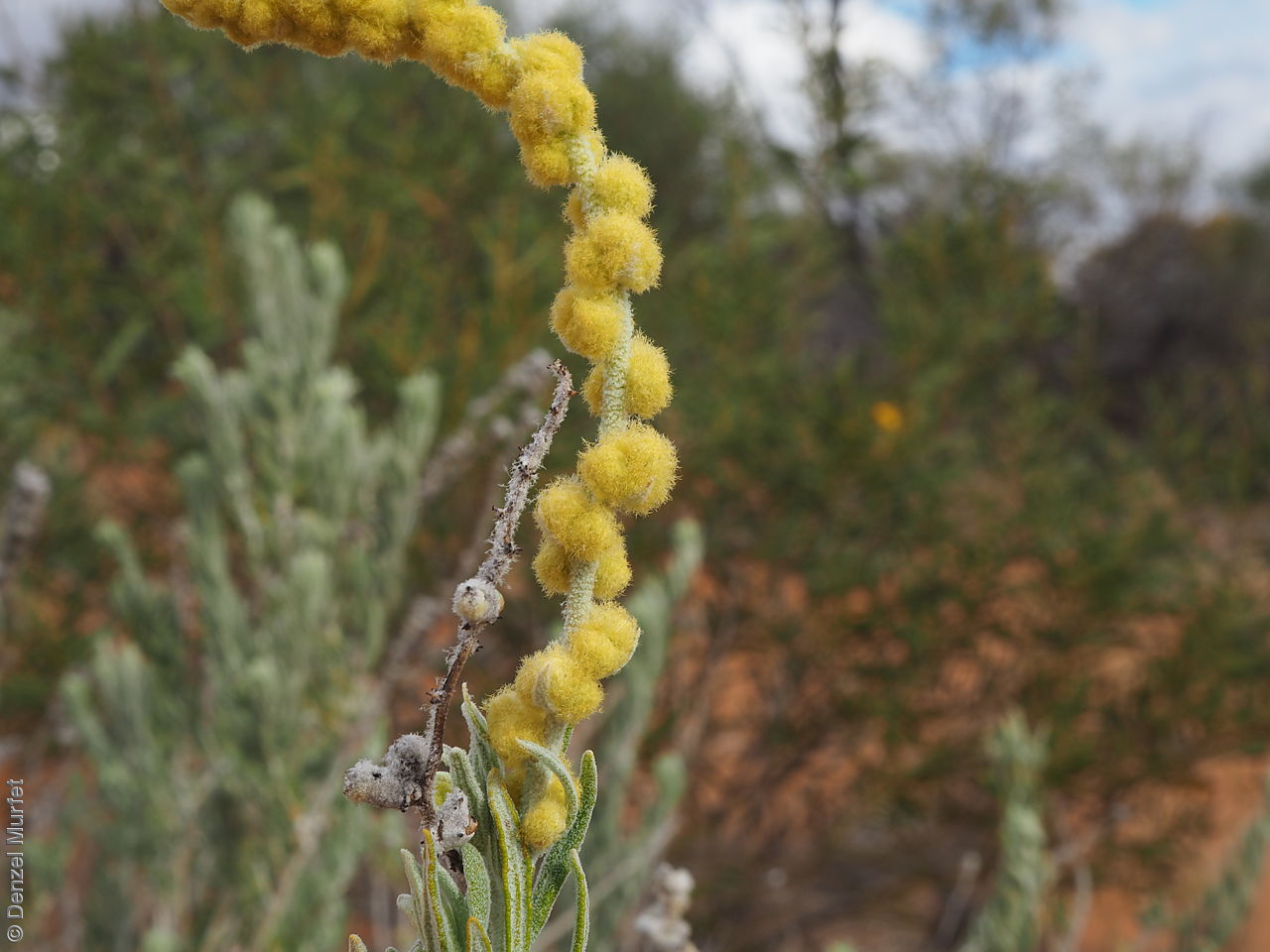













Botanical art
Prior names
Dicrastylis beveridgei var. lanata
Dicrastylis beveridgei var. beveridgei
Common names
Beveridge's Sand-sage
Sand-sage
Pur#ar-pur#arpa
Etymology
Dicrastylis from the Greek 'dicroos' meaning forked and 'stylos' meaning a style; alluding to the deeply 2-branched style. Beveridgei named after Peter Beveridge (1829 - 1885), collected plant specimens for Mueller between 1859 and 1865.
Distribution and status
Found in the north-western part in South Australia growing in red sand. Also found in Western Australia and Northern Territory. Native. Common in South Australia. Common in the other States.
Herbarium regions: North Western, Nullarbor, Gairdner-Torrens, Eyre Peninsula
NRM regions: Alinytjara Wilurara, Eyre Peninsula, South Australian Arid Lands
AVH map: SA distribution map (external link)
Plant description
Compact tomentose shrub up to 1 m high, approx. 1-2 m diameter with spreading, cylindrical, greyish-tomentose branches, golden-yellow at the tips. Leaves sessile, usually in whorls of 3, sometimes opposite or scattered; narrow-linear with recurved margins; obtuse, 2.8 cm long and 5 mm wide; faintly rugose; densely covered with greyish tomentum. Flower-spike terminal on a short stalk with hairy golden-yellow flowers with small white petals. Fruits are yellow spongy ball.
Seed collection and propagation
Collect seeds between October and December. Collect mature fruits that are golden and spongy. May need to collect a lot as most will not have any viable seeds. Place the fruit in a tray and leave to dry for 1 to 2 weeks. Then rub the dried fruits with a rubber bung to dislodge the seeds. Use a sieve to separate any unwanted material. Store the seeds with a desiccant such as dried silica beads or dry rice, in an air tight container in a cool and dry place.